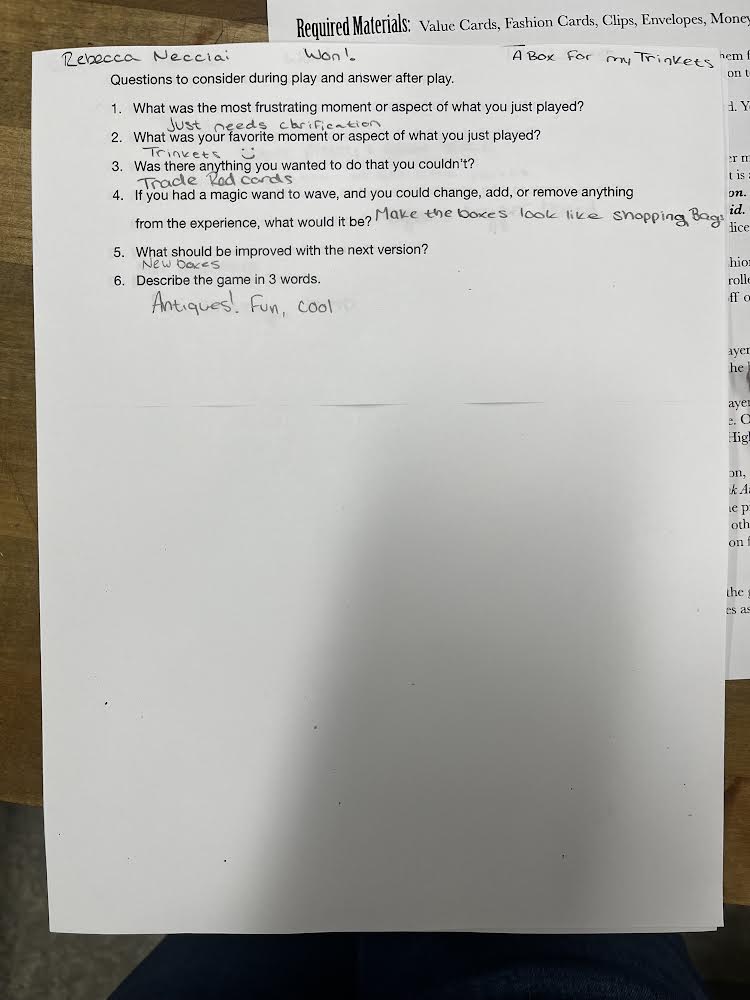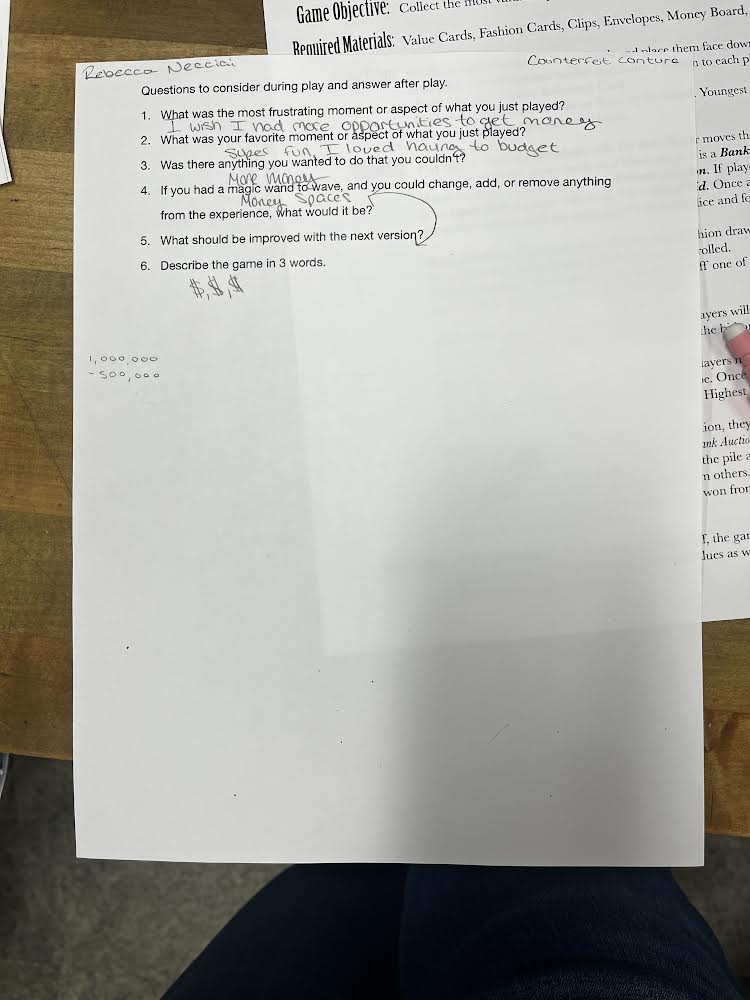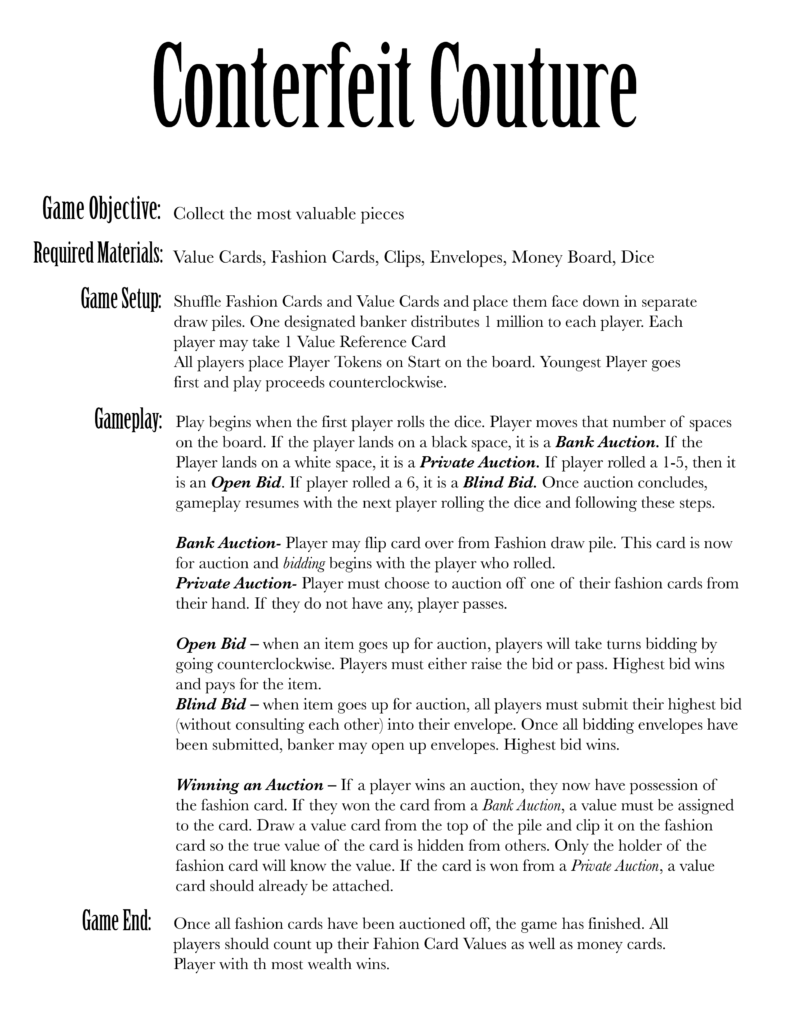anansi’s web of tricks
- the rules not being on the cards and having to look in the rules over and over again.
- it was like uno
- no
- no
- more cards, suits
- cultural, fun, trickster
word relay
- nothing was very frustrating.
- the fast pace.
- no
- more ways to get points to make it more even points wise.
- more points
- fast, fun, intuitive
dillon’s game
- knowing how to start and how the damage parts work
- i don’t think i had a favorite moment , maybe going into the negatives of stats for fun.
- no
- have more points possible for skills and have more health.
- how the damage system works.
- challenging, dnd, interesting





